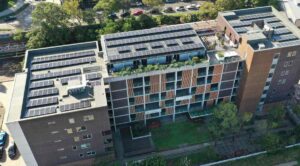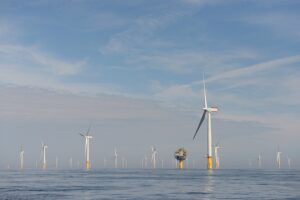AGL Energy has joined a growing list of investors taking write-downs on the value of their wind and solar assets because of the combined impacts of grid congestion problems, and falling prices accelerated by the impacts of Covid-19.
Although the scale of the write downs are a fraction of the tens of billions written off in recent weeks by the oil and gas industry, including in Australia – faced with the realisation that the clean energy transition is real, inevitable and (should be) accelerating – the impact on wind and solar assets nevertheless is a concern to investors.
Renewable energy investors have already been hit by the impact of grid congestion problems and commissioning delays, including UK-based John Laing, which is now trying to sell its Australian assets, Italy’s Enel Green Power (Bungala solar), France’s Neoen (Bulgana wind), and UK-based Foresight Group. Contractors local and international have also been hit badly by cost-overruns and damages claims over connection delays.
AGL added its name to the list on Thursday with the release of its annual results, which reflected an overall fall in profits due to declining prices, and big slump in forecast earnings to just half of its year ago figure.
Included in its accounts are a $14 million write down ($10 million net) in the value of its 20 per cent share of the Powering Australia Renewable Fund, the investment vehicle it created to raise capital for wind and solar projects.
PARF currently holds four assets – the 102MW Nyngan and 53MW Broken Hill solar farms in NSW, the 200MW Silverton wind farm near Broken Hill, and the nearly complete 440MW Cooper’s gap wind farm in Queensland, which for a while at least will be the biggest in the country.
AGL’s 20 per cent interest in PARF had a carrying value in the accounts of $96 million at the end of the 2019 fiscal year, but this has now been reduced to $80 million at the end of 2020 fiscal year. That’s a 16 per cent write down, and is similar to the hits suffered by other investors.
It suggests that Queensland Investment Corp, which owns 80 per cent of the fund, would likely take a $70 million pre-tax hit on its share of the fund. QIC did not return calls before publication of the story.
- “AGL partially impaired the carrying value of its investment interest in Powering Australian Renewables Fund, reflecting revised market pricing and generation output assumptions for operations sites (sic),” the company says in notes to the accounts.
It wouldn’t say which sites took the brunt of the write-downs. It could be that all four wind and solar farms will receive less revenue than forecast due to the fall in wholesale prices. But it’s also likely that the two assets near Broken Hill – the solar farm of the same name and the Silverton wind farm – took a bigger hit because of the grid congestion problems in the area.
Both facilities have had significant downgrades in their marginal loss factors (which govern the amount of electricity deemed to have reached a customer from the generator), and it took nearly two years for Silverton to be allowed to operate at full capacity.
Both facilities – along with another 10 solar farms in south-west NSW – have been warned of further cutbacks due to congestion issues in the grid west of Wagga Wagga, where the local transmission network company says too much power is flowing east, potentially putting the network stability at risk.










